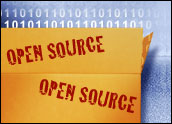
The Open Source Census, a collaborative project initiated by OpenLogic to collect and share quantitative data on the use of open source software, has revealed more than 220,000 open source packages and project installations on business hard drives. The census now aims to take a deeper look into open source products used by enterprise adopters.
The project has also revealed a new set of sponsors, among which is Microsoft.
“The big push now is working with enterprises to submit data from a much larger sampling of machines in their organizations,” Kim Weins, senior vice president of marketing for OpenLogic, told LinuxInsider.
As this third phase of the ongoing open source census begins, the ranks of census membership are growing significantly, according to organizers. The first two stages involved drumming up support and framework for conducting a global census and an initial wave of survey reporting by participating companies.
The survey is gaining international prominence. About 66 percent of computer hard drives scanned by their owners in the first two months were outside the U.S. Active global participation in the census came from areas such as Europe, Canada and Australia.
Initial Findings
The first wave of program surveying was based on data from only a handful of computers in each participating business, Weins said. The company representative participating in the software scan would search perhaps his or her own desktop computer or a few in a single location inside the company.
OpenLogic now wants to drill down much deeper to get more detailed data compiled from scans done on hundreds or even thousands of computers within the same organization, she said.
So far, the top open source packages found installed in business offices — in order — are Firefox, Xerces, Zlib, Xalan and Prototype. The Linux OS Ubuntu is the top Linux distribution on machines scanned to date, according to census findings released Monday.
Various versions of Ubuntu accounted for almost half of all Linux distributions installed on participating machines. Debian accounted for 14 percent; Suse Linux accounted for 12 percent of install base; Fedora Core counted 7 percent.
Some Surprises
As more extensive surveys of installed packages are conducted, higher usage incidents of Red Hat Enterprise Linux should be evident, according to Weins.
“At the enterprise level, we found 59 different installed packages a bit lower than we expected. This is probably because the census is still in the early stage. We expect to see the number of different installed packages to grow to around 100,” Weins explained.
OpenLogic expected to find a larger number of different packages in use based on customer feedback. That feedback was part of what originally motivated the open source census, Weins told LinuxInsider previously.
Growing Momentum
New members have joined the census organization at various levels, including a new level called “Friends of the Open Source Census.” New participants at the Friends level include ActiveState, EnterpriseDB and OSAlt.com (Open Source as Alternative). New sponsors include Microsoft and Oregon State University’s Open Source Lab.
“ActiveState was built on open source, and we’re excited to support the Open Source Census,” said Bart Copeland, CEO of ActiveState. “Open source software offers enterprises flexibility, community development and increased innovation. The census is going to shine the light on how much enterprises are actually using open source technologies, including languages like Perl, Tcl and Python.”
The goal at Oregon State’s Open Source Lab is to not only facilitate open source communities but also the development and distribution of open source software, according to Jeff Sheltren, the facility’s operations manager.
“One of the main benefits we see with the Open Source Census is that it allows individuals and enterprises to report their OSS usage data anonymously to a centralized location. The census data can be used by open source software developers to see how widely used their applications are, while at the same time allowing enterprises to review their OSS usage and compare it to the aggregate data reported by all census users,” he said.
Big Blue Too
Microsoft is participating in the open source census because its customers, partners and developers are working in increasingly heterogeneous environments, explained Sam Ramji, senior director of platform strategy at Microsoft. Projects like the Open Source Census are relevant for the ecosystem in which Microsoft participates, he added.
Microsoft, he claimed, actively participates in open source through Microsoft engineers and product teams and with industry partners and OSS projects.
Hundreds of open source alternatives are available to replace well known proprietary software products, according to Anders Ingeman Rasmussen, editor of OSAlt.com.
“We believe the Open Source Census will quantify what we see on our site every day — that the enterprises are no longer afraid of using open source software,” Rasmussen said.
Founding Members
OpenLogic launched the Open Source Census in April 2008 with sponsors including IDC; CollabNet; Holme, Roberts & Owen; Navica; Olliance Group; Open Solutions Alliance; Open Source Business Foundation; and Unisys. The goal is to provide improved data on how open source software is used in the enterprise.
The Open Source Census also has enlisted advisors from the open source development community, including Jim Jagielski, chairman of the Apache Foundation; and Tony Wasserman, director of the Software Management Program at Carnegie Melon West.
To contribute data or to see a high-level recap of the survey statistics, go to the Open Source Census.
Survey Standards
OpenLogic provides survey participants with a free download of the OSS Discovery tool to scan any of their computers and contribute the scan results to the Open Source Census database anonymously. Once they have contributed scans, participants will have access to reports that summarize their own open source usage and provide comparisons to other similar companies.
OpenLogic also provides aggregate, anonymous data collected through the Open Source Census for free. This aggregate data lists the number of times each project has been installed on computers across all participating enterprises and individuals. This enables open source communities and developers to track usage of their projects.





















































